South Africa provides template for other coastal African nations to meet their aquaculture potential
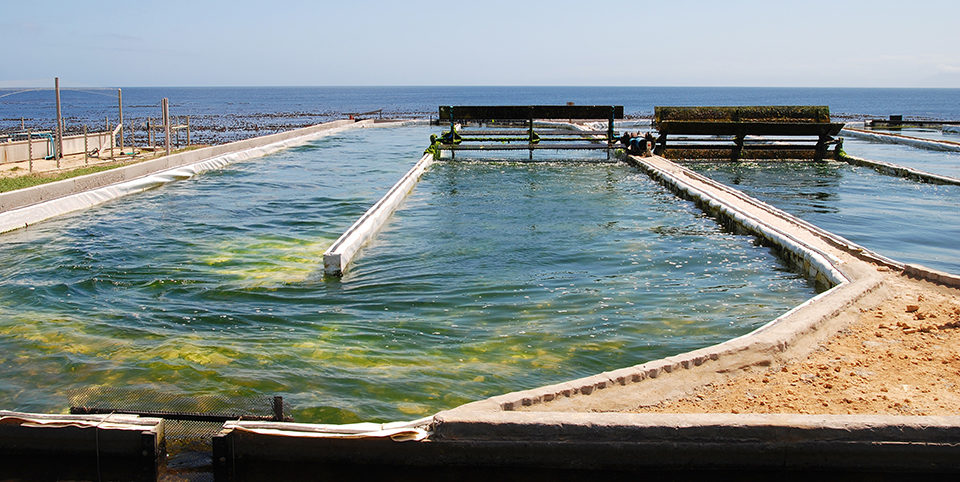
Seaweed or macroalgae are compound names for large multicellular marine algae, including brown, green and red algae. Over 20 commercial seaweed species make macroalgae the second most-cultured species of aquatic organisms after finfish, with more than 92 percent of its production coming from mariculture. Most of this production is for direct or indirect human consumption.
When talking about algae, much of the recent interest has been in microalgae, especially for biofuel production. The attributes of macroalgae seem to be overlooked.
Macroalgae
Macroalgae have a higher photosynthetic efficiency (the fraction of light energy converted into chemical energy during photosynthesis in plants and algae) (6 to 8 percent) than that of terrestrial plants (1.8 to 2.2 percent). Under cultivation, macroalgae grow rapidly and synthesize large amounts of carbon/energy reserves. They also utilize non-arable land, non-potable water and wastewater.
Seaweed can remove excess nutrients such as sodium, potassium, calcium, magnesium, chloride, iodine and bromine from industrial agriculture effluent and reduce coastal eutrophication. Major metallic pollutants also taken up by seaweeds are lead, chromium, mercury, uranium, selenium, zinc, arsenic, cadmium, gold, silver, copper and nickel, of which cadmium is highly absorbed among others in combine, states with sulphur, chlorine and oxygen.
South African industry
South Africa’s seaweed industry has been in existence for over 60 years. It currently is based on the following macroalgal species: Ulva species, Porphyra species, Ecklonia maxima, Laminaria pallida, Gracilaria gracilis, Gracilariopsis longissima, Gelidium abbottiorum, G. pteridifolium, G. pristoides, G. capense and Plocamium corallorhiza.
These have been used commercially as feedstock for phycocolloid production and for the production of abalone feed and several commercial plant-growth stimulants used in the agricultural sector. In the last seven years, macroalgae have been developed as a feedstock for biofuel production.
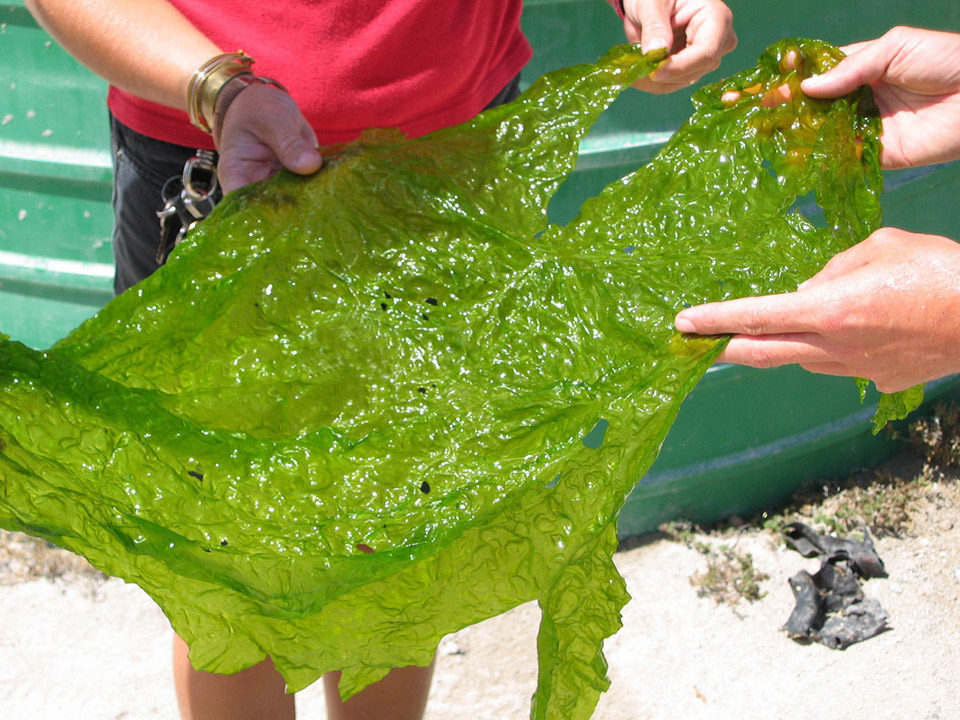
Green energy, bioremediation
The green seaweed Ulva armoricana, the main species of Ulva grown in South Africa, is currently the country’s largest aquaculture product by weight. It is grown on a large scale with a corresponding capacity for large-scale production of methane biogas. U. armoricana’s growth rate, ease of harvesting, resistance to contamination by other algal species and minimal production loss make it preferable to microalgae and other macroalgae for large-scale renewable energy production.
The authors’ findings have further proven that biotransformation of Ulva to liquefied petroleum gas is viable and economically feasible as clean fuel (Table 1). Results from land-based, paddlewheel flow-through cultivation systems with Ulva armoricana have shown that it is efficient at nutrient extraction and heavy metal accumulation (Table 2).
Amosu, Composition and biogas yield, Table 1
| Element | Biogas |
|---|
Element | Biogas |
|---|---|
| Methane | 53% |
| Carbon dioxide | 47% |
| Hydrogen | 1% |
| Hydrogen sulfide | 325 ppm |
| Ammonia | 75 ppm |
| Water | 3° C (Dew point) |
| Gas yield | 77.4 normal m3/t fresh matter |
| Gas yield | 691.0 normal m3/t dry matter |
Amosu, Heavy metals and nutrient composotion, Table 2
| Heavy Metal/Nutrient | Experiment Seawater (0 fertilizer) | Experiment Double Fertilizer Ratio | Experiment Quadruple Fertilizer Ratio | Standards South Africa Permissible Limit (mg/kg) (Lettuce) | Standards FAO/WHO Permissible Limit (mg/kg) |
|---|
Heavy Metal/Nutrient | Experiment Seawater (0 fertilizer) | Experiment Double Fertilizer Ratio | Experiment Quadruple Fertilizer Ratio | Standards South Africa Permissible Limit (mg/kg) (Lettuce) | Standards FAO/WHO Permissible Limit (mg/kg) |
|---|---|---|---|---|---|
| Cadmium | 0.639 ± 0.023a | 1.166 ± 0.360b | 0.845 ± 0.566b | 0.1 | 0.20 |
| Copper | 4.619 ± 1.193a | 5.676 ± 1.367a | 4.687 ± 1.148a | 30.0 | 0.10 |
| Lead | Not detected | Not detected | Not detected | 0.5 | 0.30 |
| Zinc | 18.640 ± 4.814a | 20.244 ± 2.011a | 22.158 ± 8.991a | 40.0 | .015-.030* |
| % Nitrogen | 2.122 ± 0.862a | 3.220 ± 0.494b | 2.350 ± 1.039b | – | Good manufacturing practices |
| % Phosphorus | 1.789 ± 0.082a | 1.711 ± 0.318a | 1.700 ± 0.269a | – | 2,200.00 |
*Australia’s recommended leaf nutrient concentrations.
Table 2. Result of U. armoricana experimental heavy metals and nutrient composition.
Feed production
When grown as a feedstock, there was no suggested metal contamination of tissues, so Ulva could be used as a plant stimulant, in feed formulations for livestock and for the food industry. Studies with Ulva in abalone, Haliotis midae; sea urchins, Tripneustes gratilla; and African mud catfish, Clarias gariepinus; showed that with an Ulva-enriched diet, growth could be increased, or there was no significant difference (P < 0.05) in the feed-conversion ratios among the fish or abalone when substituting Ulva for a protein component across the different experimental diets.
The experimental fish, urchins and abalone were able to utilize Ulva-enriched diets better than non-enriched diets, as well as the all-seaweed diets. This suggested that protein-enriched Ulva species have the potential to be successful as fish feed, particularly if the diets include Ulva grown with enriched nutrient, and are good substitutes for protein in formulated commercial feeds.
Acidification mitigation
Most of the current macroalgae aquaculture occurs in integrated multi-trophic aquaculture (IMTA) systems with seaweed and abalone. One of the positive side effects of seaweed/abalone co-cultivation is that the seaweed is able to alter seawater pH to make it more beneficial for abalone.
Toxicity tests for pH were conducted to assess the health of Ulva grown under extreme pH conditions. Findings showed increasing carbon dioxide concentrations decreased water pH (4.71 to 6.67), which caused a significant inhibition in growth and led to different sporulation responses, especially when the medium was not enriched. However, the Ulva was able to tolerate and increase pH in integrated systems, which had positive benefits for abalone.
Additional benefits from seaweed-farming activities include capturing atmospheric and dissolved carbon dioxide during growth to assist in climate change mitigation. The energy supply in South Africa is primarily coal-based. South Africa is therefore a carbon dioxide-intense economy, with the country’s major energy requirement sourced from fossil fuels. South Africa has among the highest per-capita emissions of greenhouse gases in the world.
It is widely accepted that increases in carbon dioxide, largely caused by human-induced emissions from the burning of fossil fuels and other activities, result in global warming, ocean acidification and climate change. Ocean acidification represents an extremely serious environmental hazard, particularly for shellfish aquaculture. Evidence suggests the South African abalone industry will be influenced by ocean acidification. However, IMTA systems that incorporate Ulva and abalone could potentially mitigate this effect.
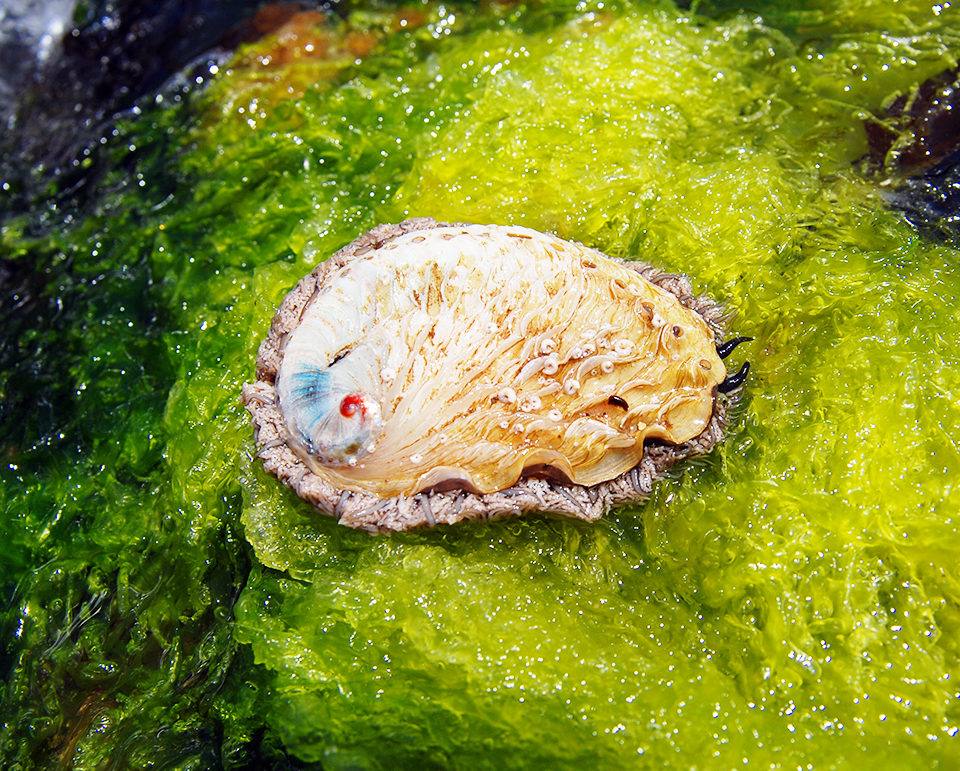
Perspectives
Despite the fact that South Africa is currently not Africa’s largest seaweed aquaculture producer, the country has the highest regional seaweed diversity and one of the richest in the world. As a third-world country with many first-world technologies, South Africa provides many important lessons for less-developed coastal African nations.
The South African seaweed aquaculture industry is well researched and has developed steadily due to the increasing demand for abalone feed that has seen the need for sustainable production of seaweed in IMTAs.
Presently, the South African seaweed industry provides raw materials for other sectors of the economy, as well as the potential for bioremediation of both the atmospheric and aquatic environments. It provides a template that could be used by other coastal African nations to further their undeveloped aquaculture potential.
(Editor’s Note: This article was originally published in the March/April 2015 print edition of the Global Aquaculture Advocate.)
Authors
-
Albert O. Amosu
Department of Biodiversity and Conservation Biology
Faculty of Natural Sciences
University of the Western Cape
Private Bag X17
Bellville 7535, South Africa -
Deborah V. Robertson-Andersson, Ph.D.
School of Life Sciences
University of KwaZulu-Natal
Westville, Durban, South Africa -
Gavin W. Maneveldt, Ph.D.
Department of Biodiversity and Conservation Biology
Faculty of Natural Sciences
University of the Western Cape
Private Bag X17
Bellville 7535, South Africa
Tagged With
Related Posts
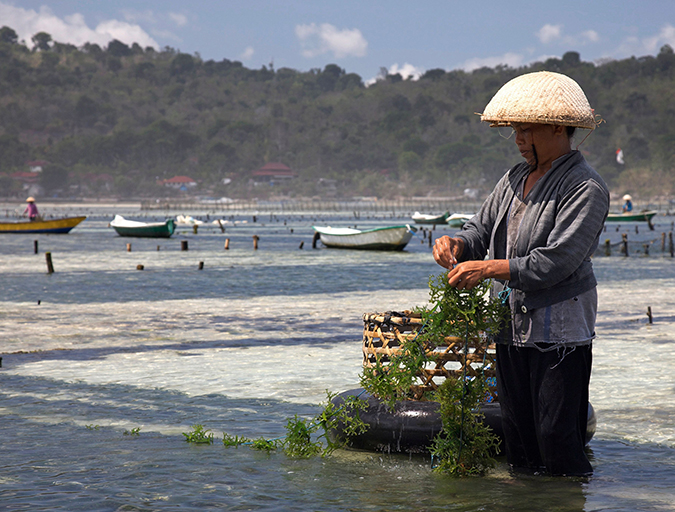
Responsibility
Can sustainable mariculture match agriculture’s output?
Global, sustainable mariculture production, developed on a massive, sustainable scale and using just a small fraction of the world’s oceanic areas, could eventually match the output of land-based agriculture production. Scale and international law considerations require the involvement of many stakeholders, including national governments and international organizations.
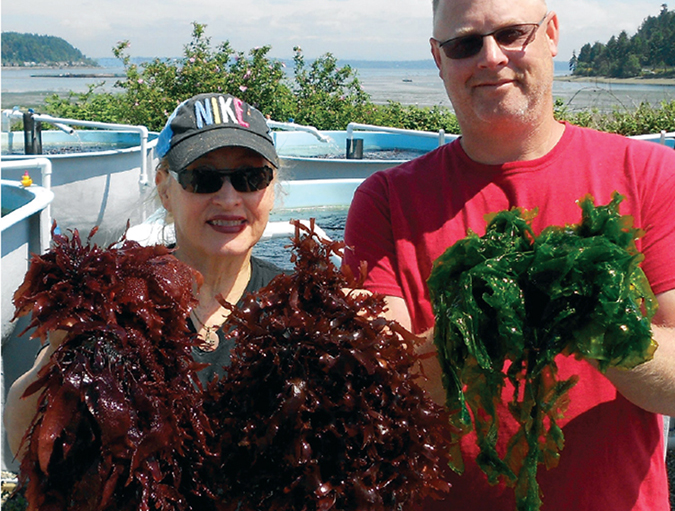
Intelligence
Land-based macroalgae farming
Land-based cultivation of macroalgae can minimize impacts on wild macroalgae stocks while reducing harvest costs and controlling quality. Integration of macroalgae with land-based fish culture systems could reduce capital and operating costs.
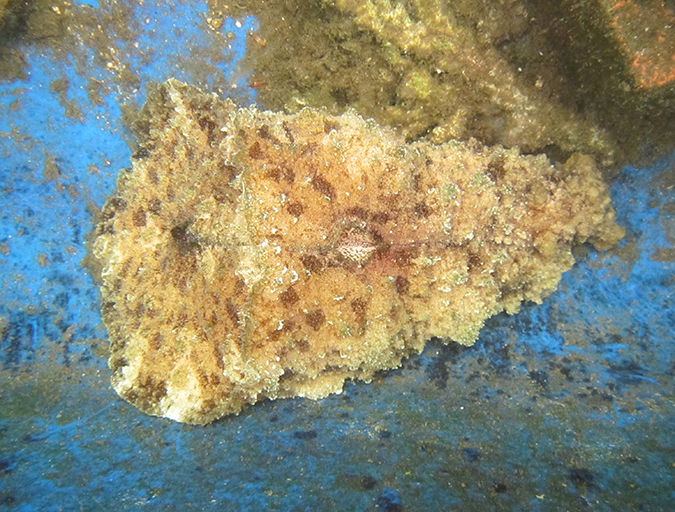
Responsibility
The odd wedge sea hare is useful as an ‘algae cleaner’
Marine gastropod molluscs known as sea hares are relatively unknown animals that have significant importance in biomedical research due to their particular nervous system. And because of their ability to consume large amounts of algae, they can be very useful in clearwater, marine aquaculture systems.
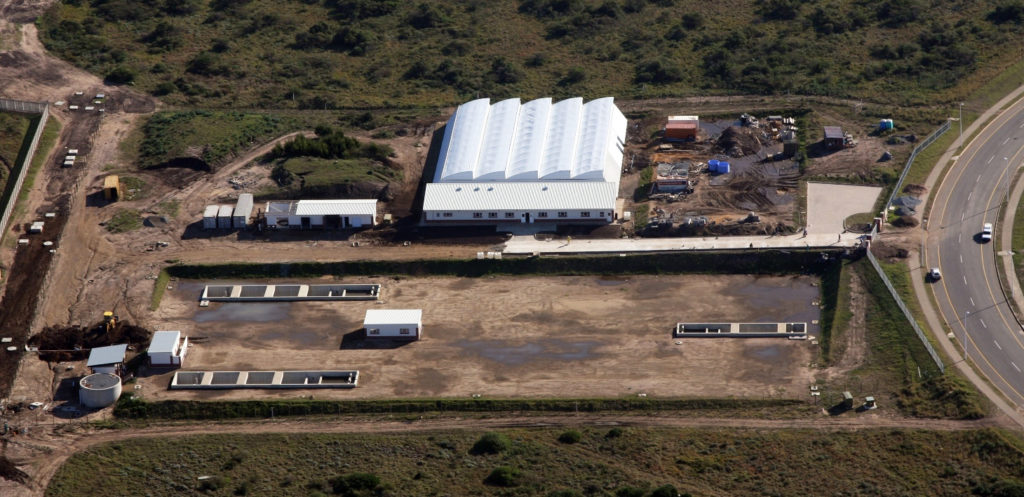
Innovation & Investment
From South Africa, a cautionary tale for aquaculture investors
South Africa’s marine fish farming industry burned many investors, but the operational experiences aided productivity in intensive aquaculture systems, especially land-based RAS. The time to invest is now.


